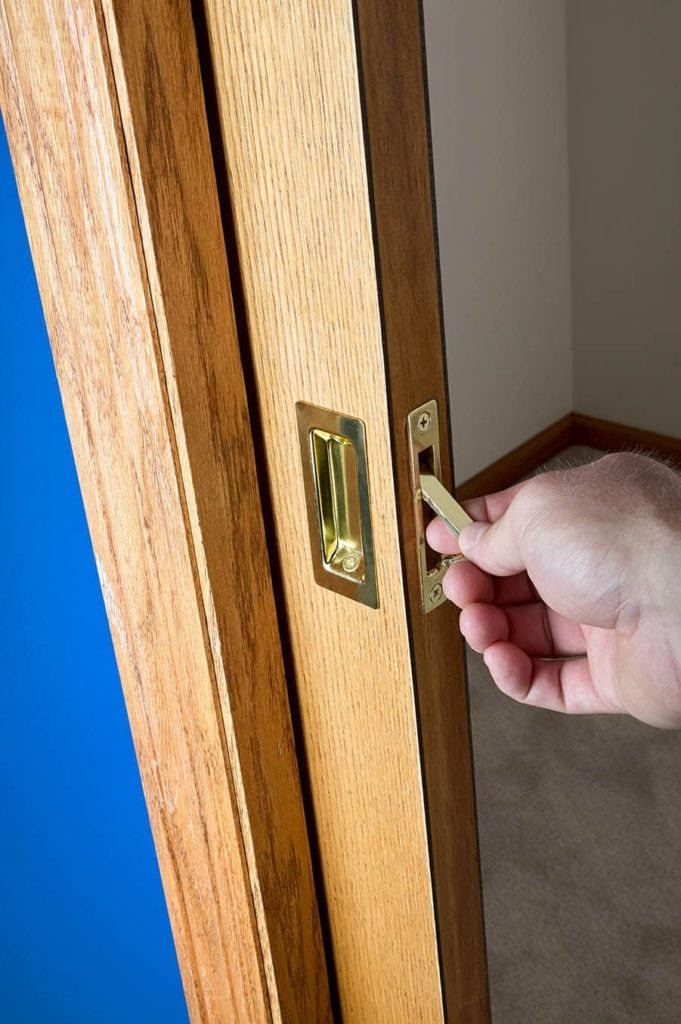
Think of your pocket door as a hidden doorway—with a lock that should ideally work seamlessly. When it doesn’t, it can feel like trying to solve a puzzle with missing pieces. In this guide, we’ll walk through the common causes of pocket door lock issues, particularly focusing on brands like Emtek or Kwikset, and share step-by-step solutions to get you back to enjoying your space comfortably.
Understanding How Pocket Door Locks Work
To troubleshoot a pocket door lock effectively, it’s crucial to understand the mechanics behind it. Pocket doors slide into the wall, saving space and providing a sleek look. The lock mechanism usually consists of a latch that engages with a strike plate when you turn the knob or handle.
When you turn the knob, a bolt extends from the latch and into the strike plate to secure the door. Think of it like a tongue fitting perfectly into a groove. If either part is misaligned or damaged, the lock won’t engage properly. Understanding this is your first step toward solving the issue.
Another essential component to consider is the track system. If the door isn’t sliding smoothly, it could prevent the latch from aligning correctly with the strike plate. Regular maintenance, like cleaning the tracks and lubricating the door, can help prevent these problems. If your door is sticking, it might be time to inspect those tracks for debris.
Common Issues with Pocket Door Locks
So, what are some common culprits that could cause your pocket door lock not to engage? Here are a few:
- Misalignment: This is one of the most frequent problems. If the door has shifted, even slightly, the latch may not line up with the strike plate.
- Debris Buildup: Dirt, dust, or even small items caught in the track can obstruct smooth movement. A packed track can cause the door to stick and disrupt proper locking.
- Worn Components: Over time, latches and strike plates can wear down. If your lock isn’t engaging, check these parts for signs of damage.
- Lock Mechanism Failure: In cases of electronic locks, a dead battery or misconfigured settings can be the reason behind the lock malfunctioning.
Understanding these issues can help you identify what might be going wrong. With a little patience and the right approach, you can often resolve these problems without calling a professional.
Step-by-Step Troubleshooting for Misalignment
If you suspect misalignment is the issue, here’s how to address it:
1. Check the Alignment: Start by examining the door when it’s closed. Is the latch flush with the strike plate? If not, you’ll need to adjust the door.
2. Adjust the Hinge: If the door is misaligned, try adjusting the hinges. Loosen the screws on the hinges slightly, then shift the door to line it up properly. Once it’s aligned, retighten the screws.
3. Test the Lock: After you’ve made adjustments, test the lock. Turn the knob or pull the handle to see if the latch engages smoothly with the strike plate.
If you’ve adjusted the hinge and it’s still misaligned, you may need to shim the hinges. This involves placing a small piece of cardboard or plastic between the hinge and the door frame to shift it into better alignment.
Cleaning and Maintenance for Smooth Operation
Regular cleaning and maintenance can prevent issues before they arise. Here’s what to do:
1. Cleaning the Track: Use a vacuum or a damp cloth to remove dirt and debris from the track. Make sure to get into the nooks and crannies where dirt builds up.
2. Lubrication: After cleaning, apply a silicone-based lubricant to the track. This helps the door glide smoothly and prevents sticking.
3. Inspecting the Wheels: If your door has wheels, check them for wear and tear. Worn wheels can inhibit the door’s movement, causing alignment issues.
By keeping your pocket door and lock mechanism clean and well-maintained, you can avoid many common problems that might prevent smooth operation.
Dealing with Worn Components
If you identified that the lock mechanism is worn out, here’s how to replace it:
1. Remove the Old Lock: Use a screwdriver to take out the screws holding the lock in place. Gently pull out the latch mechanism.
2. Get a Replacement: Look for a replacement lock that matches the brand and model of your existing lock. Brands like Emtek and Kwikset usually have compatible replacement parts.
3. Install the New Lock: Follow the reverse process of removal. Secure the new lock in place, ensuring that everything fits snugly.
4. Test the New Lock: Once installed, test the lock to ensure it engages and disengages without issue.
Sometimes, all it takes is a simple replacement to restore your privacy and peace of mind.
Troubleshooting Electronic Locks
If your pocket door has an electronic lock, the process may look a bit different. Here’s how to troubleshoot:
1. Check the Battery: If the lock doesn’t respond at all, the battery could be dead. Replace it with a fresh battery, following the manufacturer’s instructions.
2. Reset the Lock: Sometimes, resetting the device can resolve issues. Consult your user manual for specific reset instructions tailored to your brand.
3. Re-pair the Lock: If your lock uses a remote or is part of a smart home system, you may need to re-pair it to ensure proper functionality.
These steps can often get your electronic lock back in working order. If these solutions fail, it might be time to consult customer support for your lock brand.
Preventing Future Issues
Once you’ve resolved your pocket door lock issues, consider the following strategies for prevention:
– Regular Maintenance: Schedule regular checks on your door and lock mechanisms every few months.
– Keep Tracks Clear: Ensure the tracks are always clean and free from obstructions.
– Check for Wear: Inspect the lock and latch regularly for signs of wear and replace them as needed.
By taking these steps, you can help ensure your pocket door functions smoothly for years to come.
In conclusion, troubleshooting a pocket door lock not engaging can seem daunting at first, but with a few simple steps, you can often solve the problem on your own. Whether it’s a matter of alignment, debris, or wear and tear, taking the time to understand and address these issues can save you time and hassle. So next time your pocket door acts up, remember, you have the tools to fix it!
